Charcoal Burner / Summer / Autumn / Edible
Step into the enchanting world of the Charcoal Burner, scientifically known as Russula Cyanoxantha, as we delve into the captivating qualities of this intriguing mushroom.
In this blog post, we embark on a journey to discover the unique characteristics and ecological importance of this species. With its striking cap colors ranging from shades of charcoal to vibrant purples, the Charcoal Burner offers a visual spectacle that can be appreciated by mushroom enthusiasts and nature lovers alike. Join us as we explore the habitat, identification, and fascinating ecological role that the Charcoal Burner plays in the forest ecosystem.
Scientific Name
Russula Cyanoxantha
Family
Russulaceae
Habitat
Mixed and broad leaved woodland particularly beech. growing in small groups.
Description
There are several purple/greenish/grey capped Brittlegills, the charcoal burner is the only one with greasy, non-brittle gills. This is by far the best eating Brittlegill and is worth adding to stews and soups or just enjoyed on toast!
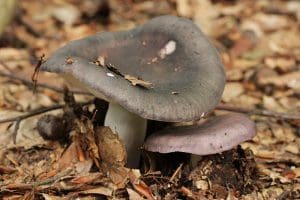
Identifying Features for the Charcoal Burner:
Cap:
Convex sometimes with a central depression . The colour can vary between specimens being olive, brown, wine, grey, purple or even yellowish. becomes greasy/slimy when wet.
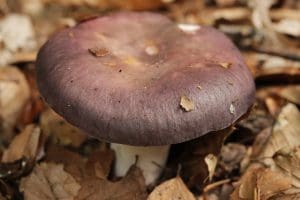
Stem:
White to off White stem between 5 and 10cm long. If you rub the stem with iron salts. the stem turns bright green.
Gills:
Gills white and flexible unlike other Russulas whose gills are brittle.
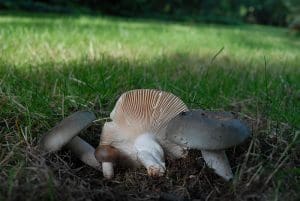
Smell:
Indistictive mushroom smell with a mild nuty taste.
Spores:
white to cream
Uses
this is an excellent eating mushroom and by far the best tasting Russula( Brittlegill)
In food
must be cooked, this is an excellent mushroom as it has a mild nutty taste and firm and thick flesh
Harvesting
Found from late July to November growing in mixed deciduous woodland.
Known hazards
must be cooked as well as other russulas.
Potential lookalikes
Other Russulas but these have brittle gills rather than the charcoal burners flexible ones.
The stems of other Russulas stain salmon pink when rubbed with iron salts whereas the burner stains slightly green.
-Snap – Does the stem snap like a piece of chalk?
-Flick – Do the gills break when you flick them gently?
-Peel – Does the skin on the cap peel away?
-Taste– this should only be done when you have gone through the other steps and are confident that you have a Russula. If a tiny amount placed on the tongue a chilli like burn or tingle means the mushroom is poisonous but a pleasant mushroomy taste means it is edible.
When applying this four step process you should not get brittle gills as the Charcoal Burner does not exhibit them.



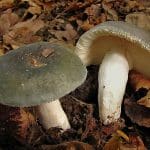
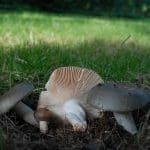
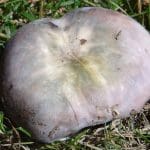
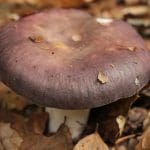
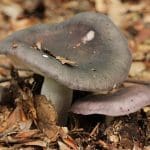



Leave a Reply
You must be logged in to post a comment.